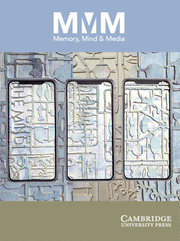Our sense of self evolves as our society changes. With the vast advances of digital technology over the past decades, the growing impact of social media has been exponential on how we see the world and how we view ourselves (Auxier and Anderson Reference Auxier and Anderson2021; Dean Reference Dean2021). Not only has social media become a major source for individuals to receive information, but it has also served as a democratised forum for individuals to create and disseminate information. Half of the 7.7 billion people around the globe are active users on social media platforms such as Facebook, Twitter, WhatsApp, and WeChat. Just Facebook alone, there are approximately 2 billion daily active users who produce 293,000 status updates and 510,000 comments every minute (Dean Reference Dean2021; Marr Reference Marr2021). Particularly important in the current context, social media affords individuals with new means to share their personal experiences with a wide range of audiences physically afar (Bell and Gemmell Reference Bell and Gemmell2010; Lenhart and Fox Reference Lenhart and Fox2006; Stone and Wang Reference Stone and Wang2019). This contributes to a sense of selfhood that is unprecedented in modern times (Wang Reference Wang2013, Reference Wang2021). In this article, I propose a triangular theory of self to characterise the sense of selfhood unique in the era of social media.
The triangular theory of self
The self is a multifaceted, complex, and dynamic construct that encompasses an individual's subjective experience of the world and aggregated knowledge of one's own traits and attributes (James Reference James1890; Neisser Reference Neisser1988; Truong and Todd Reference Truong and Todd2017). Autobiographical memory, or memory for significant personal experiences from an individual's life, further supplements the self with a temporal dimension and contributes to a sense of self-continuity over time (Fivush Reference Fivush2011; Wang Reference Wang2013). The self is characterised by reflective consciousness that is essentially private to the individual mind and supported by specific neural networks (Modinos et al Reference Modinos, Renken, Ormel and Aleman2011; Pfeifer et al Reference Pfeifer, Lieberman and Dapretto2007). In the meantime, the self operates in a social world and is marked by interpersonal roles and reputation; as such, the self is highly responsive to the views of others and to the sociocultural context (Wang Reference Wang2006; Wang and Chaudhary Reference Wang, Chaudhary, Pawlik and d'Ydewalle2006).
The dynamic characteristics of the self are accentuated in the digitally mediated modern society (Wang Reference Wang2013). According to the triangular theory, the self in the social media era is composed of three types of representations: the represented self, the registered self, and the inferred self. The represented self is the characteristics, roles, and experiences of oneself as perceived and encoded by the person who acts as an agentic experiencer and knower. The registered self is the characteristics, roles, and experiences of the person as shared on social media. The inferred self is the characteristics, roles, and experiences of the person as viewed and interpreted by the virtual audience. The represented self, while in line with the traditional notion of selfhood (James Reference James1890; Neisser Reference Neisser1988; Truong and Todd Reference Truong and Todd2017), is externalised in the social media era to the registered self as its digital extension and to the inferred self as its transactive extension. The three components of the self mutually influence each other to constitute a sense of selfhood and identity that is specific to the social media era. The theoretical model is depicted in Figure 1. I discuss each component of the triangular self in turn, as well as the interplay between the three components and between the person, social media, and the virtual audience.
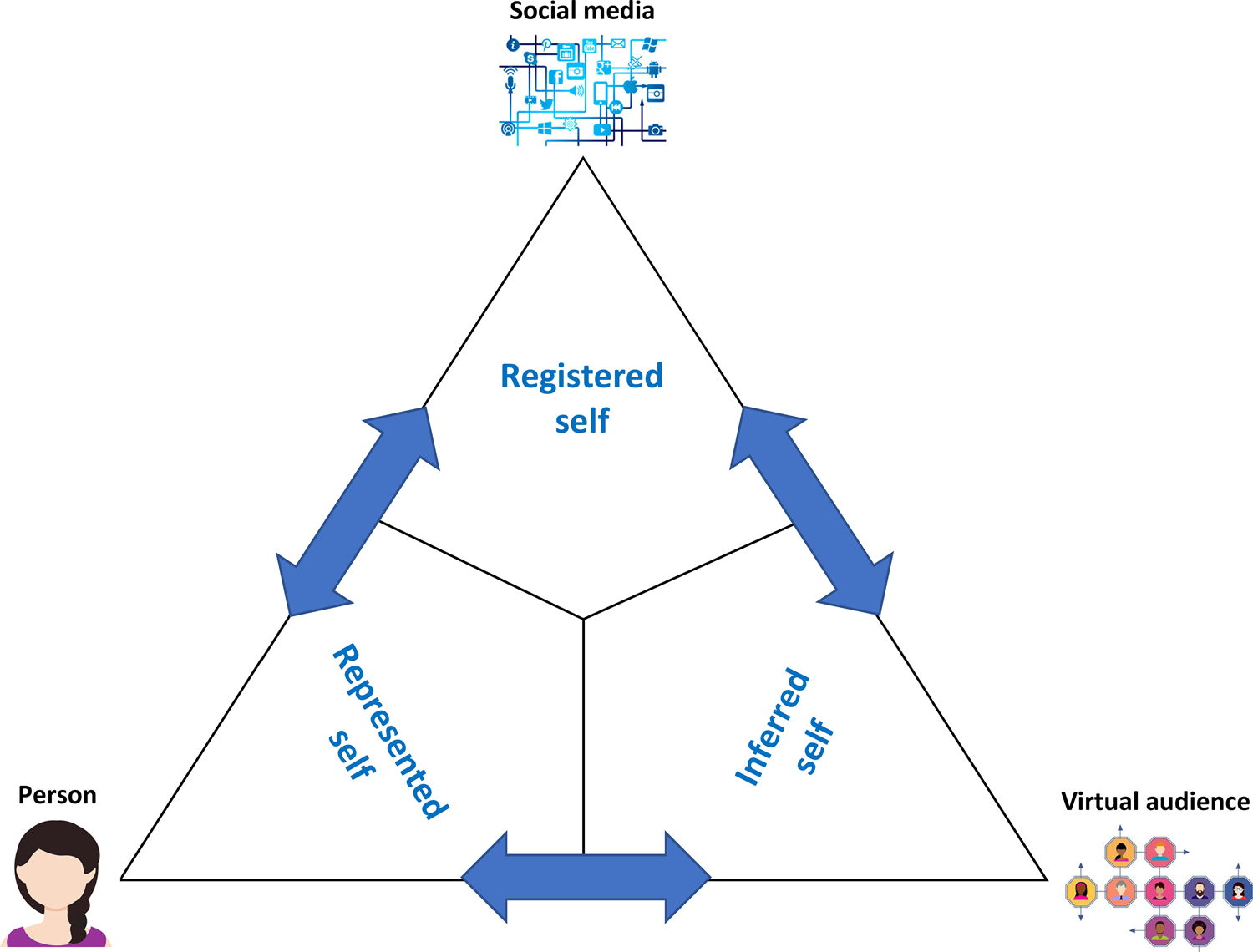
Fig. 1. The triangular self in the social media era.
The represented self and its externalisation
In the triangular theory of self, the represented self refers to one's subjective self-representations – including representations of autobiographical experiences – that are ‘located’ in the private mind and brain of the person. Yet, the represented self is embedded and constructed in the sociocultural context and, in the social media era, it is externalised and outsourced to cyberspace, where the person selectively processes, encodes, and shares self-related information online (e.g., personal events, photos, opinions, ideas, etc.) (Wang Reference Wang2013, Reference Wang2019). The development and maintenance of the represented self, therefore, entails an active, dynamic process in which the person shares his or her experiences and views on selected social media platforms with an intended virtual audience who are often physically afar and psychologically heterogeneous. Different from face-to-face communication and memory sharing, sharing personal experiences online is not constrained by the physical location or immediate availability of listeners but can be achieved at any time with a large number of people with varying gradations in relationship closeness – family, friends, acquaintances, and strangers (Stone and Wang Reference Stone and Wang2019; Wang Reference Wang, Meade, Harris, Van Bergen, Sutton and Barnier2018).
The public sphere, the unlimited audience, and the permanent storage of the shared information in cyberspace make the motives of online sharing activities simultaneously personal and social. For instance, bloggers, who are dubbed as the ‘Internet's storytellers’ (Lenhart and Fox Reference Lenhart and Fox2006), use social media as a tool to both express themselves and connect with others. Sharing with the public what is traditionally considered private and diary-only information, many bloggers view blogging as a personal endeavour for themselves. In the meantime, they expect feedback from their audience, and some post material primarily to engage their intended audience such as friends and family (Lenhart and Fox Reference Lenhart and Fox2006; Stefanone and Jang Reference Stefanone and Jang2008).
General memory research has shown that people share memories for various purposes: to convey information about who they are – the self function, to entertain others and develop and maintain relationships – the social function, to seek empathy and support for emotion regulation and coping – the therapeutic function, and to impart lessons to help others – the directive function (e.g., Alea and Bluck Reference Alea and Bluck2003; Kulkofsky et al Reference Kulkofsky, Wang and Hou2010; Pillemer Reference Pillemer2001). In particular, social connection is the most prominent purpose of fact-to-face memory sharing (Alea and Bluck Reference Alea and Bluck2003; Guan and Wang Reference Guan and Wang2020; Kulkofsky et al Reference Kulkofsky, Wang and Hou2010). In the context of social media, people share memories for similar reasons (Hollenbaugh Reference Hollenbaugh2011; Wang Reference Wang2013). For example, in response to the Purposes of Online Memory Sharing Scale (POMSS), adults of different ages report sharing personal experiences on social media most primarily for social reasons, followed by self-reasons and then directive and therapeutic reasons (see Figure 2; Stone et al Reference Stone, Guan, LaBarbera, Ceren, Garcia, Huie, Stump and Wang2021; Wang Reference Wang2020). People who endorse more strongly the various purposes of online memory sharing post more frequently personal experiences on social media (Wang Reference Wang2020). There are also individual differences. For instance, individuals with a greater disclosure tendency endorse more strongly all purposes of online memory sharing; individuals who are more interdependent report online sharing more for social and directive purposes; and those who experience greater loneliness report online sharing more for therapeutic reasons (Stone et al Reference Stone, Guan, LaBarbera, Ceren, Garcia, Huie, Stump and Wang2021).
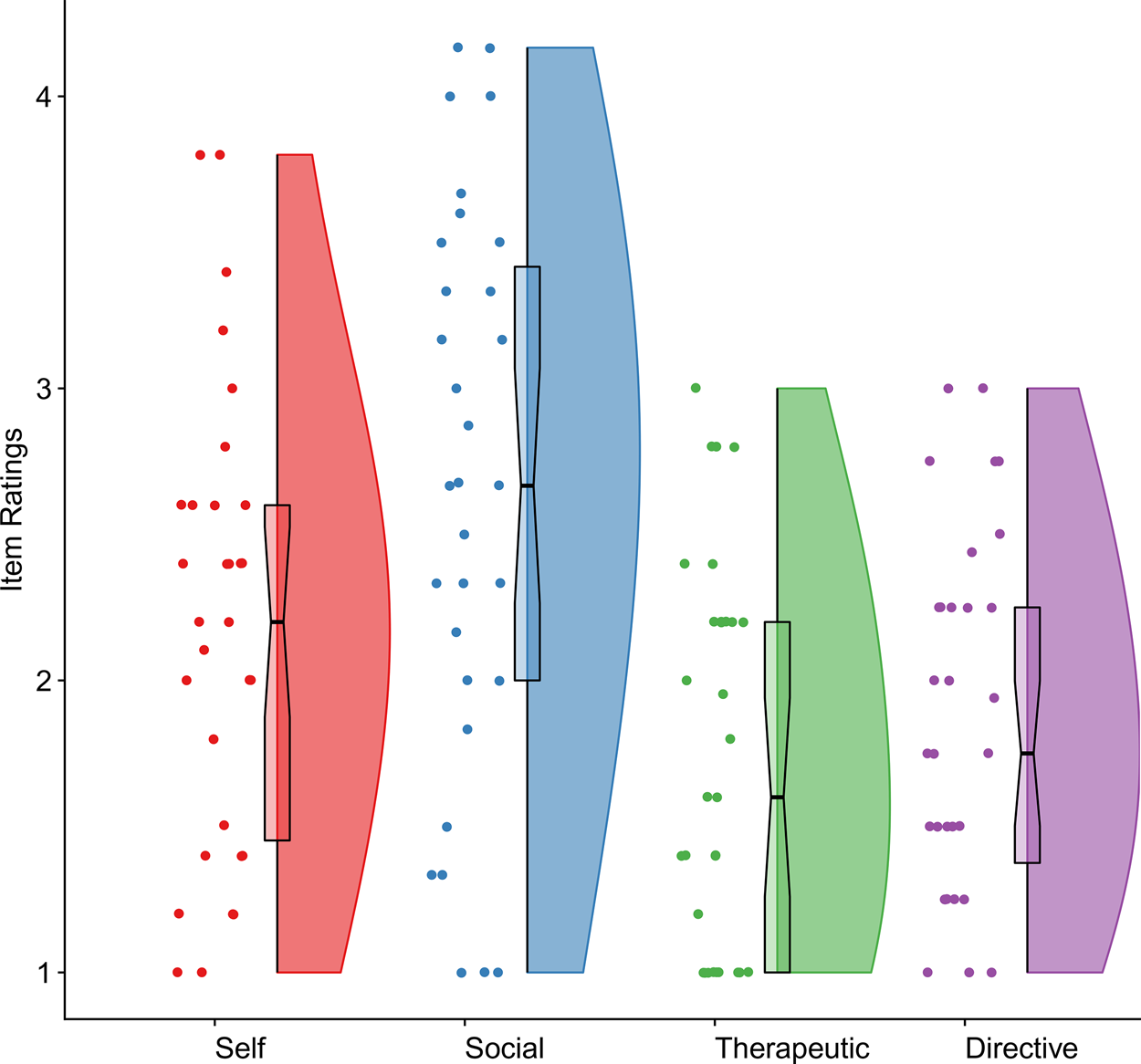
Fig. 2. Purposes of online memory sharing. The raincloud plotsFootnote 1 display the data distribution, interquartile range, and median of the ratings on each purpose. Data from Wang (Reference Wang2020).
Sharing personal experiences online, in turn, has consequences for the represented self. Unlike the online offloading of factual information which often impairs subsequent recall (Ferguson et al Reference Ferguson, McLean and Risko2015; Kahn and Martinez Reference Kahn and Martinez2020; Sparrow et al Reference Sparrow, Liu and Wegner2011), sharing personal information on social media may provide opportunities for rehearsal and meaning making and, in turn, facilitate long-term memory (Stone and Wang Reference Stone and Wang2019). In two studies that investigated this question, participants completed a daily diary for a week. They recorded autobiographical events each day and were instructed to keep note of whether they shared any of the events online (Wang et al Reference Wang, Lee and Hou2017) or to use or refrain from using Snapchat on alternate days (Johnson and Morley Reference Johnson and Morley2021). At the completion of the diary recording, participants were more likely to remember events that they had posted on social media than those not posted (Wang et al Reference Wang, Lee and Hou2017), and they correctly recalled more events from the Snapchat days than the non-Snapchat days (Johnson and Morley Reference Johnson and Morley2021). Online sharing, thus, enhances recall of autobiographical events.
The influence of social media and the virtual audience on the represented self is complex and multifaceted (Wang Reference Wang2013). Sharing memories online with a diverse audience facilitates interpersonal connection and personal expression (Hollenbaugh Reference Hollenbaugh2011; Wang Reference Wang2013), while private reminiscing often focuses on reflecting on the past for future guidance (Kulkofsky et al Reference Kulkofsky, Wang and Hou2010). Given the presence versus absence of the virtual audience and the different retrieval contexts and goals, event details posted online and those recalled privately may exhibit inconsistency. Over time, however, as the original memory traces start to fade, the wide variety of memory cues online such as comments, Likes, and periodic reminders may facilitate retention of the posted event details. As a result, event details shared in social media posts may become stabilised and remembered, while those not shared may be forgotten or inaccessible (Stone and Wang Reference Stone and Wang2019).
In a laboratory experiment to test whether memory details shared online would persist in later offline recall, participants were asked to generate recent life events in response to cue words and then describe the event details as if they were writing about the events either on WeChat or in their diaries (Reference Hou, Pan, Cao and Wang2021). Participants received a surprise memory test for the events either one week or two weeks later, either with or without the original cue words. It was found that, following a one-week interval, participants who initially retrieved memories on WeChat recalled more inconsistent details and more commissions than those who initially retrieved memories in a private diary. However, the differences dissipated and even reversed among participants following a two-week interval and with the assistance of cues. It appears that although memories shared online are subject to reconstruction deviating from offline recall, as time goes by, feedbacks and reminders on social media platforms may contribute to a ‘narrow version’ of our autobiographical memories in alignment with the online posts.
Taken together, the represented self is receptive to the context of social media and the virtual community. Although private to the individual mind, it is externalised in the social media era, a motivated process that, in turn, shapes self-representations. The person plays an active role in creating the digital extension of the self that is registered online.
The registered self and its infinite possibilities
The registered self is the online presentations of one's autobiographical experiences and the associated personal characteristics and roles, enabled by social media platforms (Figure 1). Unlike the represented self, the registered self is public by default and interactive in nature. The registered self may bear some resemblance with what is traditionally portrayed in memoirs or autobiographies, whereby, in both cases, the person tells his or her stories to an intended audience (Wang Reference Wang, Meade, Harris, Van Bergen, Sutton and Barnier2018). Yet social media makes the registered self a democratised outlet of self-presentation for all, rather than a chosen few, encoded in infinite and permanent e-memory. Furthermore, the functional capabilities of social media platforms provide rich technology features for information sharing in multimedia forms, such as text, photo, video, hyperlink, and even livestreaming and augmented reality. This affords individuals with infinite possibilities to create a digital extension of the self. The public sphere and the technological capacity of social media give rise to distinct characteristics of the registered self, with its content and form serving the person's goals to communicate the self and relate to other selves online (Figure 3; for detailed discussion, see Wang Reference Wang2013).
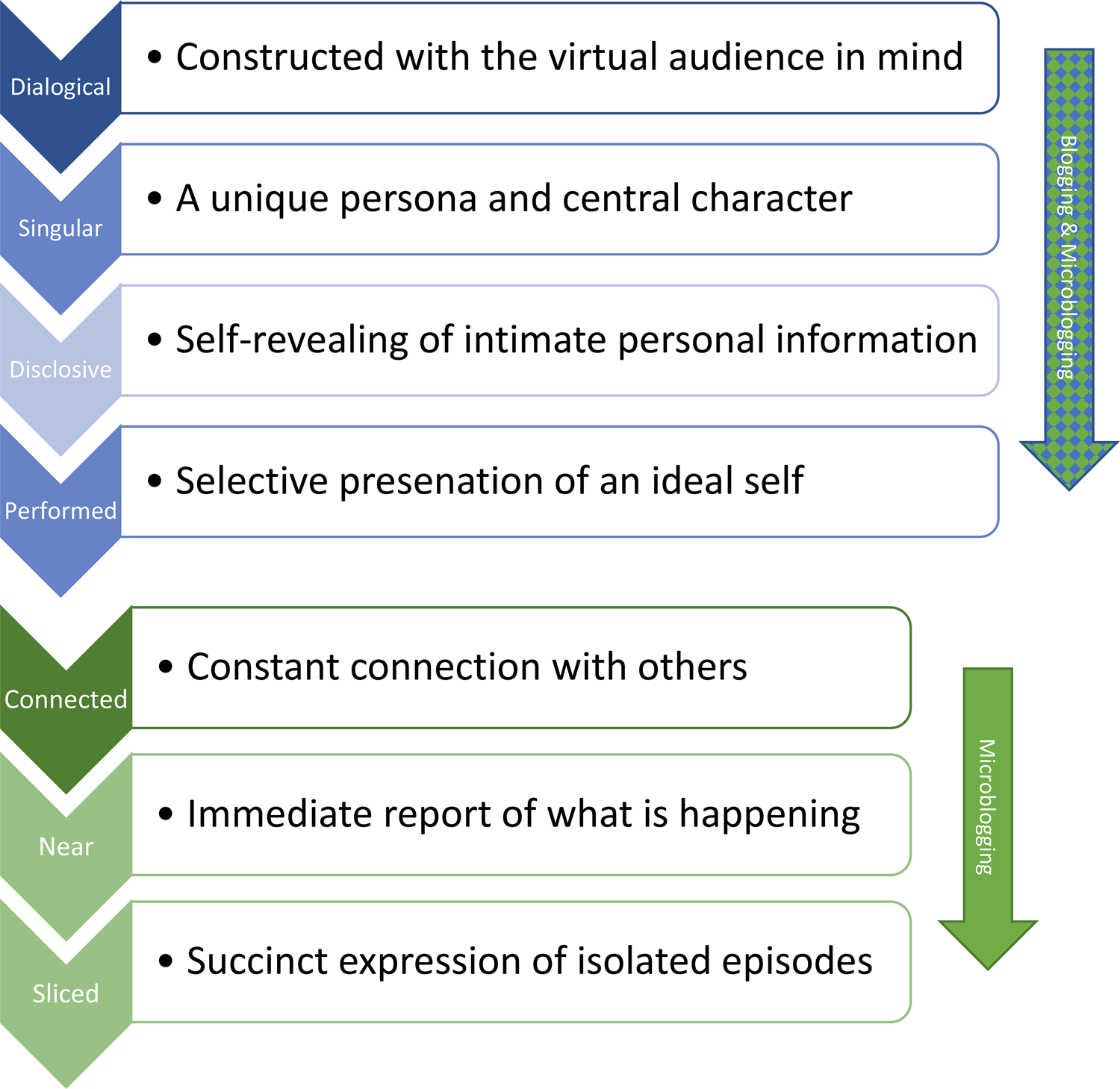
Fig. 3. Distinct characteristics of the registered self on social media.
Specifically, the registered self is constructed with the virtual audience in mind and is, therefore, dialogical in nature. The person may use a variety of tactics to engage the audience, such as to provide captivating details of his or her experiences and to directly ask questions or seek feedback (Miura and Yamashita Reference Miura and Yamashita2007). Also, sustained by a wide array of multimedia strategies, the registered self often portrays a unique persona distinctly different from other selves online. It is a singular selfhood with maximised individuality, who authors one's own life stories and acts as the central character (Serfaty Reference Serfaty2004). Furthermore, the registered self is often expressive and even disclosive, revealing intimate personal information and innermost thoughts and feelings, a critical component in the development of interpersonal closeness and social bonding (Levinger Reference Levinger1980). Online self-disclosure is especially common among extroverts and those who exhibit disclosiveness traits (Hollenbaugh Reference Hollenbaugh2011; Stefanone and Jang Reference Stefanone and Jang2008). The registered self is also performed, being presented in a positive light to express an ideal self (Lee et al Reference Lee, Im and Taylor2008). In line with these characteristics of the registered self, autobiographical memories recalled for online posting tend to be more elaborate, more likely to include questions, more self-revealing, and more positive, when compared with memories recalled for a private diary (Wang et al Reference Wang, Blenis, Ng and Gonzalez2015).
The role of microblogging (e.g., status updates) as a social media genre in representing the registered self is particularly notable. During microblogging, individuals make short, frequent posts for online audience interactions in the format of text as well as links, audio, images, and video. In addition to sharing information (e.g., what is in the news), individuals post their moment-to-moment whereabouts and trivial ephemera. Compared with traditional blogging, microblogging is a faster, more convenient, and more palatable way of communicating with others (Auxier and Anderson Reference Auxier and Anderson2021; Dean Reference Dean2021), and information shared in microblogs is particularly memorable to the virtual audience (Mickes et al Reference Mickes, Darby, Hwe, Bajic, Warker, Harris and Christenfeld2013). With the growing trend towards mobile web browsing, personal status updates in microblogs have become an extremely popular form for individuals to share their everyday lived experiences online. The unique characteristics of microblogging give rise to additional unique characteristics of the registered self (see Figure 3).
The short, frequent, and real-time status updates create a presence of the person online with physical and psychological proximity, and they encourage and facilitate immediate interaction from the virtual audience through commenting, liking, reposting, and so on. This makes the registered self in microblogging constantly connected with other selves (Sheldon et al Reference Sheldon, Abad and Hinsch2011). Also, status updates focus on ‘what I'm doing right now’, in which individuals share what they observe in their immediate surroundings and their activities, thoughts, and feelings, often using present tense (i.e., ‘Enjoying coffee with Sarah’). The registered self in microblogging is, thus, temporally near the present moment. Furthermore, apart from being chronologically ordered and having the author as the main character, personal status updates are often seemingly isolated episodes and states of mind that the person experiences, without an apparent framework for integration. The registered self in microblogging is, therefore, sliced to reflect fragments of the person's selfhood (Page Reference Page2010; Wang Reference Wang2013).
The registered self can, in turn, shape the represented self. For instance, given the performed online self-representations, it is no surprise that people feel good about themselves after viewing or editing their own online profiles while feeling bad after viewing others’ posts (Faelens et al Reference Faelens, Hoorelbeke, Fried, De Raedt and Koster2019; Gonzales and Hancock Reference Gonzales and Hancock2011). Frequent exposure to others’ selective and glorified online self-presentations leads social media users to believe that others are happier and having better lives than they are (Chou and Edge Reference Chou and Edge2012). Moreover, the registered self differentially engages the virtual audience. For instance, social media posts by those with low self-esteem tend to convey low-positivity and high-negativity content, which then elicits undesirable responses from others (Forest and Wood Reference Forest and Wood2012). Social media posts with excessive presentations of the ideal self receive fewer Likes, while those with self-disclosure of personal information – a gesture that suggests eagerness to interact – receive more Likes (Hong et al Reference Hong, Jahng, Lee and Wise2020).
Taken together, the motives to express oneself and connect with others interact with the interface and characteristics of social media platforms to produce the registered self in cyberspace. While the person is an active agent in selectively sharing autobiographical information online, the receiver or consumer of the information, namely the virtual audience, also play an active role in inferring and working out who the person is.
The inferred self and the transactive mind
In the social media era, the represented self is not only externalised to the digital platforms to create the registered self, but also to the virtual audience to construct the inferred self (Figure 1). In the transactive mind of the virtual community, or the ‘cybermind’ (Wegner Reference Wegner, Mullen and Goethals1986, Reference Wegner2012), the audience interact with the person and among themselves and collectively encode, integrate, and update information about the characteristics, roles, and experiences of the person. The inferred self, thus, derives from information about the person shared online and operates through communicative processes within the virtual community (Wang Reference Wang2013). Although the inferred self may share some characteristics with impression formation about a person in real life, it is a transactive property constructed and upheld by a large and diverse online audience and is informed by permanent and yet frequently renewed social media posts. Just like the represented self and the registered self that continue to evolve as life progresses, the inferred self continues to update as information about the person accumulates online.
Critically, the construction of the inferred self involves active meaning making by the virtual audience based on the available information about the person (Figure 4). The registered self, especially in microblogging that lists ‘mere successions of doings’ (Page Reference Page2010, 439), presents disparate experiences of the person, with earlier posts bearing no obvious logical connections with later ones. It is the virtual audience who interweave the slices of information into a coherent life story about who the person is. The timestamp of the online posts provides physical clues to assist the virtual audience in reconstructing a chain of events taking placing in the person's life. For family, friends, and acquaintances, their knowledge about the person in real life further helps them fill in the gaps between individual posts and interpret what is happening. Operating through the transactive memory system (Wegner Reference Wegner, Mullen and Goethals1986, Reference Wegner2012), the audience members further engage with each other online, exchange knowledge and information about the person, and feed their perceptions back to the community. The inferred self is constructed as the virtual audience impose a unifying interpretive structure on the diverse posts to infer meaning and form representations of the person's selfhood (Page Reference Page2010; Wang Reference Wang2013).
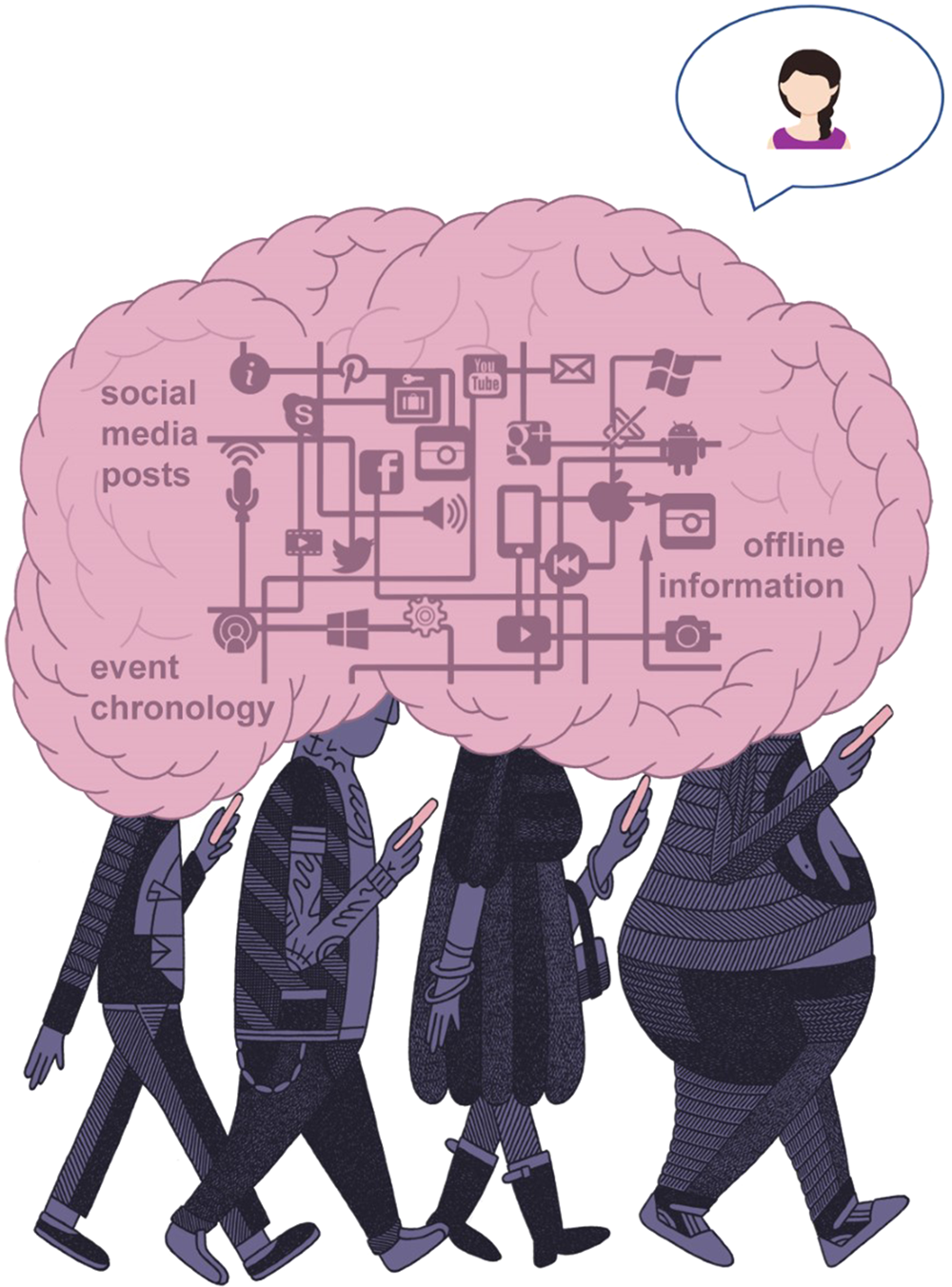
Fig. 4. The inferred self through the transactive mind of the virtual community. Illustration by Luke Ramsey.
Not only is the inferred self constructed through the meaning-making process outsourced to the virtual audience, but it is also revised, negotiated, and updated via the audience's diverse ways of interacting with the person, such as giving Likes, commenting, and reposting. The virtual audience react to social media posts based on their knowledge of the person and interpretation of the material. The mere process of making comments on a post can shape the inferred self by boosting the commentator's memory for the post (Zimmerman and Brown-Schmidt Reference Zimmerman and Brown-Schmidt2020). Giving Likes to others’ social media posts also appears to be rewarding for the giver, activating brain regions responsible for reward processing and prosocial behaviour (Sherman et al Reference Sherman, Hernandez, Greenfield and Dapretto2018). Interestingly, this process is reciprocal in the transactive mind of the virtual community, whereby receiving Likes on one's posts activates similar brain circuitry in the receiver as in the giver and increases the receiver's behaviour to provide positive feedback to others’ posts (Davey et al Reference Davey, Allen, Harrison, Dwyer and Yucel2010; Sherman et al Reference Sherman, Payton, Hernandez, Greenfield and Dapretto2016).
Based on the audience feedback or the lack of it, the person may anticipate the expectations of the audience when making future posts about themselves and further engage in self-censorship and strategic self-presentation. For instance, individuals post more frequently when they feel excited about the Likes and comments they receive, while they change the content of their future posts when they feel sad for the lack of audience response (Stsiampkouskaya et al Reference Stsiampkouskaya, Joinson, Piwek and Ahlbom2021). Individuals who perceive their virtual audience as more responsive express themselves more openly in their social media posts (Walsh et al Reference Walsh, Forest and Orehek2020). The frequency and content of online sharing can, in turn, shape the inferred self in the virtual audience.
By affirming or defying the person's shared experiences via their responses and presence or absence of participation, the virtual audience hold great power over not only the registered self but also the represented self. For instance, receiving a large number of Likes on one's Facebook posts boosts self-esteem, although individuals with a greater sense of purpose in life are less susceptible to social media feedback (Burrow and Rainone Reference Burrow and Rainone2017). Receiving positive feedback on social media, especially when they come from close others, makes people feel that they are supported (Carr et al Reference Carr, Wohn and Hayes2016). Not receiving enough ‘Likes’ on social media posts, on the other hand, may result in negative feelings, especially in individuals with low self-esteem and those with high levels of self-monitoring (Hou et al Reference Hou, Xiong, Jiang, Song and Wang2019; Scissors et al Reference Scissors, Burke and Wengrovitz2016). In addition, heavier social media users are more likely to believe that others share their attributes and opinions (Bunker and Varnum Reference Bunker and Varnum2021). Pertaining to autobiographical memory, aspects of experiences that are shared with and endorsed by the virtual audience are likely to be remembered and thus remain part of the represented self (Hirst and Echterhoff Reference Hirst and Echterhoff2012; Hou et al Reference Hou, Pan, Cao and Wang2021).
Taken together, the construction of the inferred self is a collective process in which information about the person is perceived, negotiated, integrated, and updated through the transactive mind of the virtual community. The inferred self and the audience's reactions to the online posts further shape the sense of self of the person as well as his or her subsequent engagement with social media and the audience.
Conclusion
I have discussed a triangular theory of self in the era of social media that conceptualises the self as represented in the private mind of the person, the public sphere of social media platforms, and the transactive mind of the virtual audience. The person as an agentic knower and experiencer actively constructs the represented self – autobiographical memory in particular – and selectively externalises it online. The functional capacities and technology features of social media platforms support and constraint the registered self, facilitating the person's social and personal motives for sharing autobiographical experiences online. The virtual audience collectively construct the inferred self through meaning making of the person's diverse social media posts and through their engaging in various ways with the posts. The three components of the self mutually influence each other via dynamic, interactive, and transactive processes. Together, they constitute a sense of selfhood and identity specific to the social media era.
Acknowledgement
The author thanks the two editors for their helpful feedback.
Funding
This work received no specific grant from any funding agency, commercial, or not-for-profit sectors.
Competing interests
The author has no conflicts of interest to disclose.
Qi Wang is professor of human development and psychology at Cornell University. Her research examines how cultural forces, including the Internet technology, impact autobiographical memory and the sense of self. Wang received her PhD in Psychology from Harvard University. She is the author of The Autobiographical Self in Time and Culture (OUP 2013) and Editor-in-Chief of JARMAC.cy
